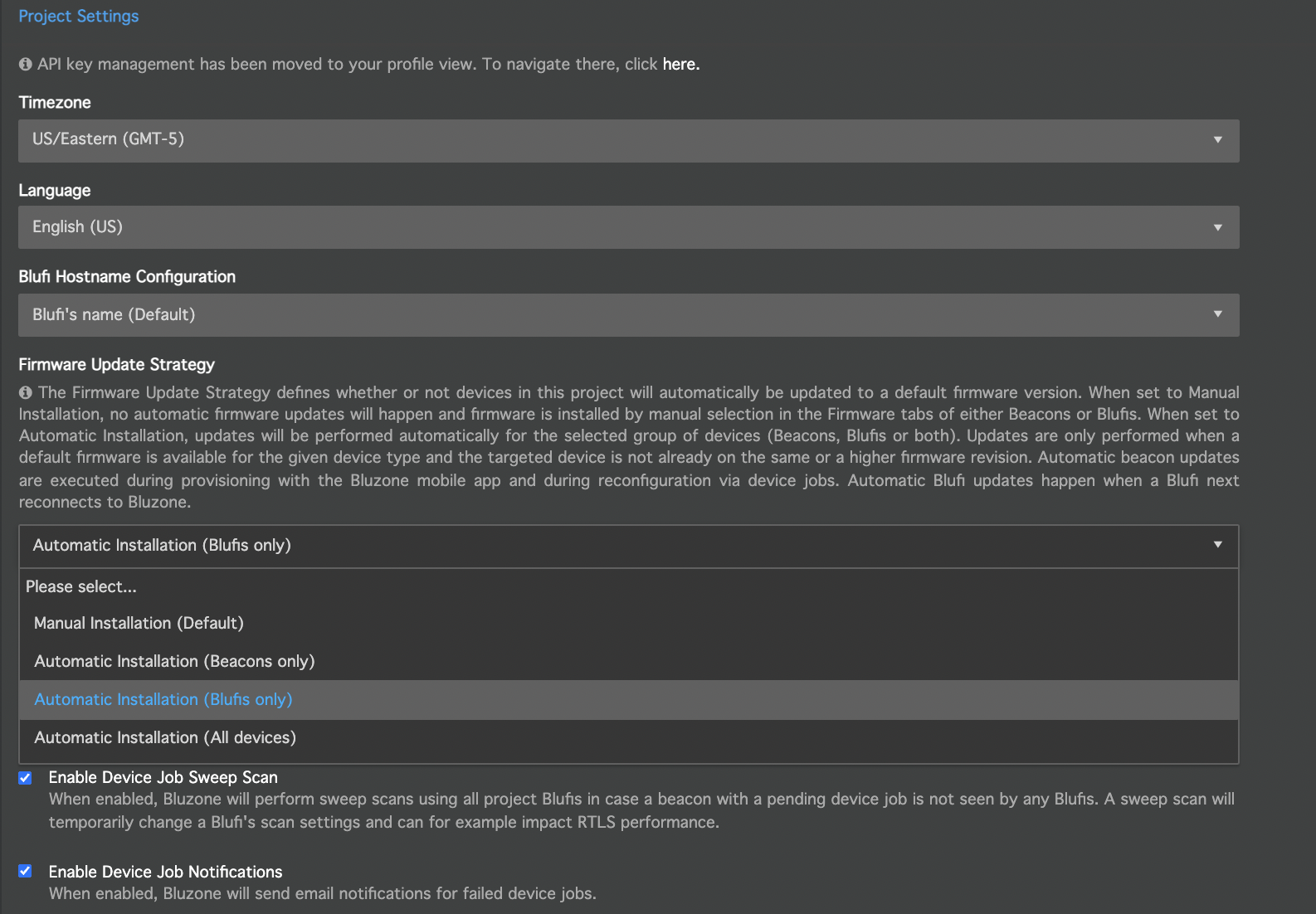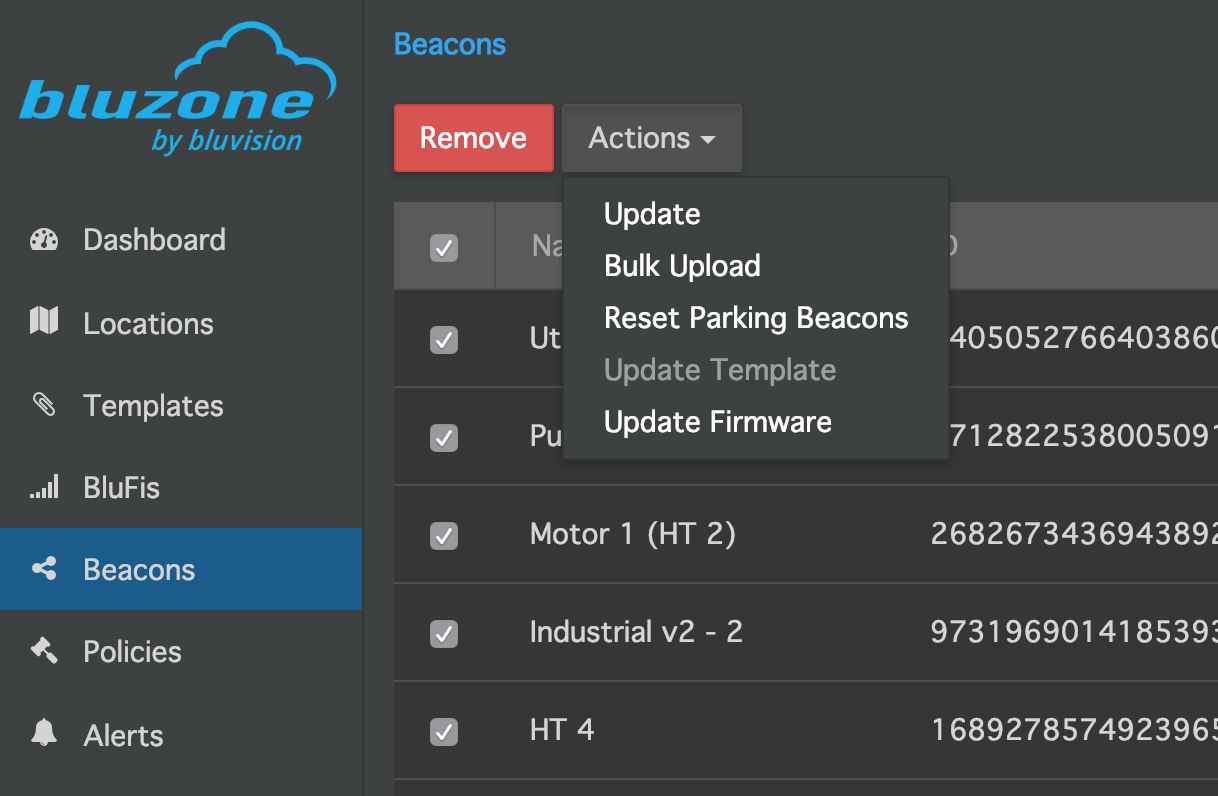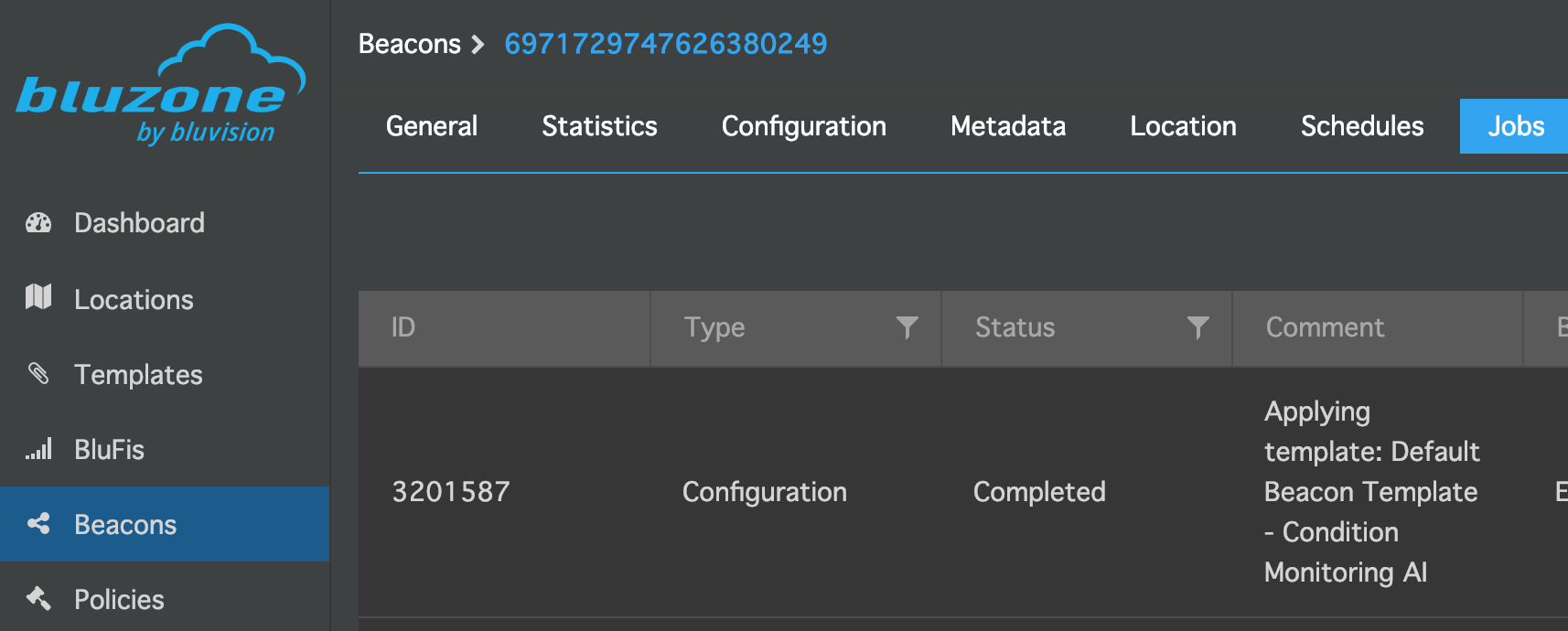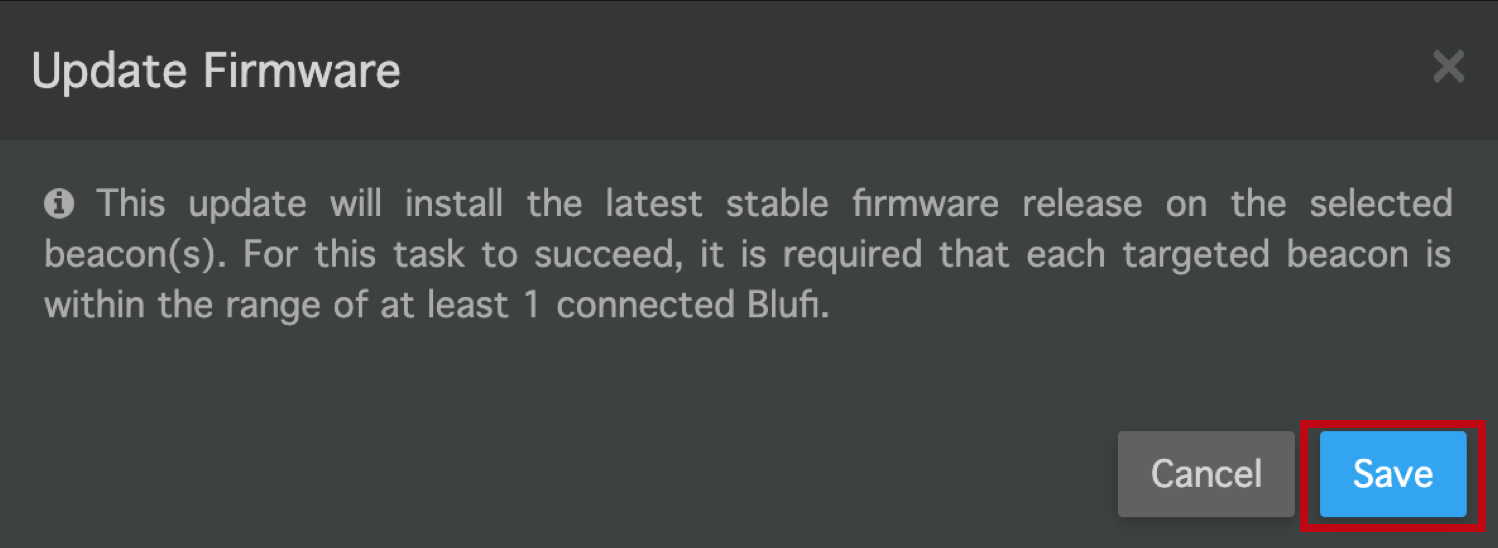Introduction
To use all the latest features and innovations of our BEEKS beacon product line you will sometimes have to do a firmware update on your beacons. This guide will show you what you need to get your firmware upgraded with ease.
Requirements
To get your beacons updated to the latest revision you need to use an Android device with Android 4.3 or later or an iOS device with iOS 5 or later. The phone or tablet used for the update must support Bluetooth 4.0 (Bluetooth Smart, formerly Bluetooth Low Energy). If your device meets these hardware requirements, then you can use one of our following apps to get your beacons upgraded:
- BEEKS Beacon Maker app for iOS
- Bluzone iOS app / Bluzone Cloud
- Bluvision iOS SDK Sample app
- BEEKS Beacon Toolkit app for Android
The next section of this guide will walk you through each of the above possibilities to upgrade your beacons' firmware.
How to update
To help you getting started with firmware updates as fast as possible we've prepared a couple of step-by-step walkthroughs. Each of them will concentrate on one of the apps listed above.
- How to install firmware using BEEKS Beacon Maker for iOS
- How to install firmware using the Bluzone iOS app and the Bluzone Cloud
- How to install firmware using the Bluvision iOS SDK Sample app
- How to install firmware using the BEEKS Beacon Toolkit app for Android
The Firmware Update Strategy defines whether or not devices in this project will automatically be updated to a default firmware version. When set to Manual Installation, no automatic firmware updates will happen and firmware is installed by manual selection in the Firmware tabs of either Beacons or Blufis. When set to Automatic Installation, updates will be performed automatically for the selected group of devices (Beacons, Blufis or both). Updates are only performed when a default firmware is available for the given device type and the targeted device is not already on the same or a higher firmware revision. Automatic beacon updates are executed during provisioning with the Bluzone mobile app and during reconfiguration via device jobs. Automatic Blufi updates happen when a Blufi next reconnects to Bluzone.
Firmware Update - Beacon
There are two approaches to update beacon firmware: manual and automatic. Manual mode will require you to update the firmware and configuration (Template) in two different steps and can only be performed from the Bluzone console. Automatic mode will perform the firmware and configuration update in the same step and can be performed from the Bluzone console as well as through the mobile app at the time of provisioning. These two approaches are summarized as follows:
- Manual: by default, every project will be configured for manual updates, which allows you to send a firmware update and a configuration update separately from Bluzone console.
- Automatic: by changing the project settings to automatic updates, firmware updates will occur in both of the following scenarios:
- When a configuration (Template) update is sent from the Bluzone console, the cloud will check if the beacon has the minimum firmware version. If the beacon does not have the minimum version, it will first upgrade the firmware, followed by the configuration update.
- When a new beacon is provisioned to a project that has been set to automatic firmware updates, at the time of provisioning, the cloud will check if the beacon has the minimum firmware version. If it does not have the minimum version, it will first upgrade the firmware, followed by the configuration update. This means that the provisioning process will generally take more time due to the firmware upgrade. Also keep in mind that a BluFi will be responsible for completing the firmware-update portion of the provisioning process, so the beacon must be in adequate range of a connected BluFi for this process to be successful.
Note :Firmware updates and configuration updates are Device Jobs, meaning that each individual beacon must have a temporary dedicated connection with a BluFi in order for the job to complete. Once the updates have been sent, the cloud will manage the scheduling, connection, and upgrade/ update process automatically. However, it should be noted that there are several factors that can adversely affect the success of Device Jobs:
Device Jobs will be slow and have an increased rate of failure for low RSSI levels. If the highest level a beacon has across all BluFi’s on the scan map is lower than -90 dBm, the device jobs may not complete at all.
There are two approaches to updating firmware: manual and automatic. Manual mode will require you to update the firmware and configuration (Template) in two different steps and can only be performed from the Bluzone console. Automatic mode will perform the firmware and configuration update in the same step and can be performed from the Bluzone console as well as through the mobile app at the time of provisioning. These two approaches are summarized as follows:
|
|---|
Beacon Firmware Update - Automatic Method
The steps for automatic firmware updates are as follows:
Step 1: Change the project settings
Click on “Settings” in the left panel. Scroll down to “Firmware Update Strategy” and change to “Automatic Installation (All devices) or Automatic Installation (Beacons only)”. Make sure you scroll down to the bottom of the page and click “Save” to save these settings for the project.
Step 2: Send a Template update to the sensors
It is important that all beacons be updated with the new firmware AND the updated corresponding Template. After step 1 has been completed, the beacons will automatically update to the latest firmware when a configuration (Template) update has been sent.
Select “Beacons” in the left panel. Select the beacons you would like to update, then click the “Actions” button and select “Update Template”
Select the Template: “Default Beacon Template – Condition Monitoring AI” (or your custom template, if applicable), then click “Save”.
Bluzone cloud will then manage the update of both the firmware and the configuration (Template).
Step 3: Verify that the correct configuration (Template) and firmware were updated
For each individual beacon, you can go to the “Jobs” tab and verify that the update was completed.
Beacon Firmware Updates - Manual Method
Manual firmware updates can be performed individually or in bulk.
Individual beacon manual update
To update an individual beacon → Select Firmware Tab → Select the firmware version and Click Install .
A dialogue box will appear and Click “OK” to update the firmware .
Bluzone will create the device job to update the firmware and verify that update was completed.
Bulk beacon manual update
To update beacon firmware in bulk, go to the Beacon gridview and select all beacons to be updated.
Click the “Actions” dropdown menu, then select “Update Firmware”.
A dialogue box will popup. Click “Save” and the device jobs will begin.
Firmware Update - BluFI
There are two approaches to update BluFI firmware: manual and automatic. These two approaches are summarized as follows:
- Manual: by default, every project will be configured for manual updates, which allows you to send a firmware update from Bluzone console.
- Automatic: by changing the project settings to automatic updates, firmware updates will be performed automatically.If the BluFi is showing offline in project than Automatic Blufi updates happen when a Blufi next reconnects to Bluzone.
BluFI Firmware Update - Automatic Method
The steps for automatic firmware updates are as follows:
Step 1: Change the project settings
Click on “Settings” in the left panel. Scroll down to “Firmware Update Strategy” and change to “Automatic Installation (All devices) or Automatic Installation (BluFI only)”. Make sure you scroll down to the bottom of the page and click “Save” to save these settings for the project.










